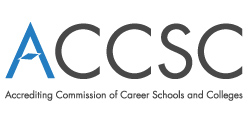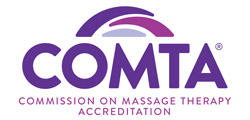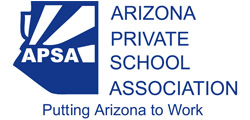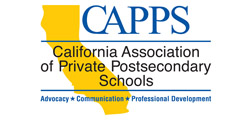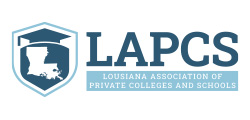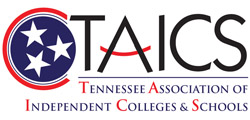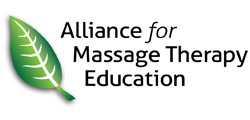Badge Evidence | Completed Courses (4 Hours Each)
ED101Effective Teaching Strategies
This introductory course covers the essential roles of a teacher and the competencies required to be a successful instructor in an educational institution. Proven techniques and strategies for planning and preparation are presented and discussed. In addition, the course offers effective methods for conducting the first class meeting and delivering course content. This course provides a solid foundation for new instructors and serves as an excellent refresher for more experienced instructors.
ED102Student Retention Methods
The instructor is the real key to student retention at any educational institution. Instructors must keep focused on student motivation and retention each and every day of class. Developing strategies for retaining students throughout the entire training sequence is both complex and rewarding. All instructors should have the goal of seeing all of their students successfully complete their class. This course helps you reach that goal by helping you to understand your students and use proven motivation and retention techniques to keep them enrolled and engaged in the learning process.
ED104Class Management Strategies
This course provides methods and techniques for managing students and class activities. We start by reviewing the steps instructors need to follow as they introduce a class to new students. We then discuss strategies to effectively deal with unfocused and challenging students. The course ends by describing common mistakes made by instructors and ways to avoid them.
ED106Enhancing Student Learning
This course provides methodologies and examples to help instructors increase content retention and application by students in need of support. The course starts by covering the skills needed by instructors to be clear communicators. We then discuss ways instructors can become effective in monitoring students and using student groups as learning tools. The course concludes by covering techniques and strategies to instruct diverse learners, including learners with disabilities.
ED112Influencing Student Motivation
This course is intended to offer a practical explanation of how an instructor’s behaviors and choices can influence the motivation of students. It is not intended to be a theoretical or academic treatise about motivation. Module 1 offers useful tips that may help instructors to motivate students. Students’ security and autonomy are described as they influence motivation during instruction, questioning, activities, and evaluations. This is followed by a discussion of how motivation can be improved by enhancing students' sense of autonomy when making assignments, selecting instructional methods, implementing classroom procedures, and developing evaluations. In Module 2, intrinsic and extrinsic motivators are defined and compared. Finally, a variety of "miscellaneous motivators" are offered for instructors to consider.
ED115RSoft Skills for Instructors
This survey course provides an introductory discussion about how good soft skills help instructors to be successful. A distinction is made between hard skills, soft skills, people skills, and workplace behaviors. Selected soft skills are listed for various categories of businesses and industries, including the teaching profession. Two studies are referenced that highlight skills that are frequently cited in the literature. One study was published in 1997, while the other was conducted specifically for this course in 2024. Selected tips are offered for improving one's soft skills. Numerous hyperlinks are included that direct the reader to a variety of online enrichment materials, including a few online instruments that help individuals learn more about their own soft skills.
ED131Teaching Students with Autism
Awareness about autism and the impact it has on the lives of those that have been diagnosed with it has grown greatly in the past few years. There has been an increase in enrollment of students who are on the autism spectrum in career education. This course will provide you with the characteristics of autism so that you will have an understanding of what autism is and how it impacts the learning of these students. Specific strategies for working with students who have been diagnosed as being on the autism spectrum will be provided, to enhance the engagement and learning success of students with autism.
ED310Teaching Medical Terminology in Fun and Exciting Ways
Have you ever seen your students falling asleep in class? Have they been less than excited to learn medical terminology? In this course you will discover ways to teach medical terminology that keep your students interested, attentive, and highly engaged in the critical concepts and applications they need to know. Learn to use these active methods, as well as the reasons behind them, and watch your student success rates increase as you adapt and apply new methods to your medical terminology classes.
Please note that ED310 presents learning activities that are applicable to the on-campus classroom or lab. It is not designed for instructors who teach Medical Terminology in the online environment.
ED400Coping with Stress and Burnout
Stress is something that is present throughout all workplaces in the world. It is often something that cannot be avoided, but instead, must be properly managed. Burnout on the other hand, is something that is less frequent, but far too prevalent. Burnout can cause even the best worker to slow down in productivity and quality (often dramatically). Throughout this course, we will discuss stress, burnout, and many of the causes that you may notice on even a daily basis. We will discuss how to appropriately handle and mitigate stressors, and how to lessen the risk of burnout occurring.
ED404Building Cultural Competency in Instructors
The purpose of this course is to build cultural competency in instructors who teach students from diverse backgrounds. This will include a review of critical terms, ideas, and real-world case studies, providing instructors and administrators with useful information and takeaways they can apply to their practice. The goal of this course is to help develop a better understanding of cultural competency and produce tangible resources to help implement plans, strategies, and ideas at your institution. In addition to lecture videos, resource links, and assessments, you will be able to utilize Journal and Learning Activities, which will continue to be useful after successful completion of the course.
ED406Motivating Others
Motivation can be the difference between success and failure. In this course, the idea of how motivation impacts people will be discussed. Activities will focus on improving motivation in students, and other people you interact with, as well as yourself. The goal of this course is to help develop a better understanding of the topic, and produce tangible resources to help implement plans, strategies, and ideas at your institution. In addition to lecture videos, resource links, and assessments, you will be able to utilize Learning Activities, which will continue to be useful after successful completion of the course.
ED409Gamification in the Classroom
This course will explore the field of gamification and the way that gaming and gaming elements have come to impact our everyday lives, and can improve our courses. Focusing on easy-to-implement concepts, this course will help you to begin utilizing gamification elements to increase learner engagement and motivation, and increase overall student success.
The goal of this course is to help develop a better understanding of the topic and produce tangible resources to help implement plans, strategies, and ideas at your school. In addition to lecture videos, possible resource links, and assessments, you will be able to utilize the Journal and Learning Activities.





